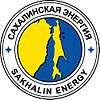Sakhalin Energy
 | |
| Private | |
| Industry | Oil and gas industry |
| Founded | 1994 |
| Headquarters | Yuzhno-Sakhalinsk, Russia |
Key people | Roman Dashkov (CEO) |
| Revenue | $4.55 billion[1] (2016) |
| $860 million[1] (2016) | |
| Total assets | $15 billion[1] (2016) |
| Total equity | $5.52 billion[1] (2016) |
Number of employees | 2,230[1] (2015) |
| Parent | Gazprom |
| Website |
www |
Sakhalin Energy Investment Company Ltd. (Sakhalin Energy) is a consortium for developing the Sakhalin-2 oil and gas project with corporate head office in Yuzhno-Sakhalinsk. The chief executive officer is Roman Dashkov.
The company's principal activities are the production and export of crude oil (since 1999) and liquefied natural gas (from 2009).
History
The original consortium was formed in 1991. Shell and Mitsubishi joined the consortium in 1992, to make it MMMMS. In April 1994, the consortium formed Sakhalin Energy Investment Company Ltd. to develop and manage the Sakhalin-2 project. Sakhalin Energy signed a production sharing agreement with the Russian Federation, represented by the government of the Russian Federation and the Sakhalin Oblast Government.
In 2007, Shell sold part of its stake to Gazprom which made Gazprom the largest shareholder with 50% share of the company.[2][3]
In November 2009, Sakhalin Energy joined the United Nations Global Compact.[4]
Operations
Sakhalin Energy develops the Piltun-Astokhskoye and the Lunskoye oil and gas fields, known as the Sakhalin-II project, in the Sea of Okhotsk, offshore Sakhalin island in the Russian Far East. The infrastructure of the Sakhalin-II project includes:
- Offshore Molikpaq platform
- Offshore Piltun-Astokhskoye-B platform
- Offshore Lunskoye-A platform
- Onshore processing facility
- Transsakhalin pipeline system
- LNG plant and oil export terminal within Prigorodnoye Production Complex.
February 2017 marked eight years since the first LNG plant in Russia was officially launched. Russia has become one of the key players in the promising Asia Pacific market through the efforts of Sakhalin Energy. About 4% of global supply of LNG comes from the Prigorodnoye production complex. PA-B won the overall Drilling Rig of the year award with Molikpaq in the runner’s up and LUN-A in the 5th place in the Shell Rig League table in 2017, which ranks on the performance, HSE and People scores.
Importance of the project for Russia and Sakhalin oblast
The Russian Federation and the Sakhalin Oblast have gained numerous benefits from the Sakhalin-2 project:
- since Sakhalin Energy started its operations, the Russian Federation’s proceeds from the Sakhalin Energy activity under Sakhalin-2 project have totalled over US$ 22.6 bln, including US$ 9 bln received by the Sakhalin Oblast;
- US$ 25 bln worth of contracts have been awarded to Russian companies and organisations;
- The Russian Federation has gained valuable experience in managing complex high-tech projects in remote locations and in subarctic conditions;
- The infrastructure on Sakhalin Island has undergone large-scale upgrades (over US$ 600 mln was invested by the company);
- Local employment levels and local workforce quality have increased (both direct and indirect effect);
- incomes and living standards for the local population have risen;
- many contracts and subcontracts have been awarded to Sakhalin companies that took part in the Sakhalin-2 project. Their capacity and competitiveness has been enhanced dramatically; – with the company’s support, extensive social and public initiatives have been carried out on Sakhalin Island. In 2017, according to the International Accounting Standards (IAS), revenues of Sakhalin Energy amounted to US$ 5.401 mln, and its total net income was US$ 1.503 mln.
Shareholders
The current shareholders are:
- Gazprom Sakhalin Holdings B.V. (subsidiary of Gazprom) - 50% plus 1 share
- Shell Sakhalin Holdings B.V. (subsidiary of Royal Dutch Shell) - 27.5% minus 1 share
- Mitsui Sakhalin Holdings B.V. (subsidiary of Mitsui)- 12.5%
- Mitsubishi - 10%
References
- 1 2 3 4 5 http://www.rbc.ru/companies/id/246.
- ↑ "Transfer of Sakhalin Energy Shares Completed" (PDF) (Press release). Mitsubishi. 2007-04-19. Retrieved 2011-07-20.
- ↑ White, Garry (2009-06-28). "Russia invites Shell back to Sakhalin as finances plummet". Telegraph. Retrieved 2011-07-20.
- ↑ "Participant Information". United Nations Global Compact.